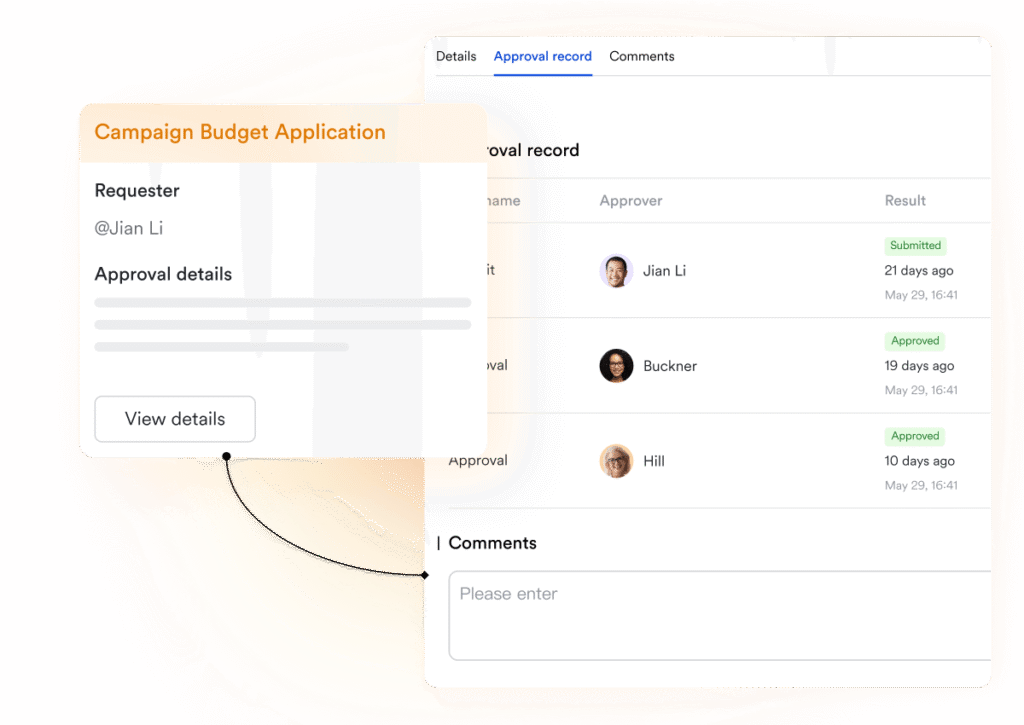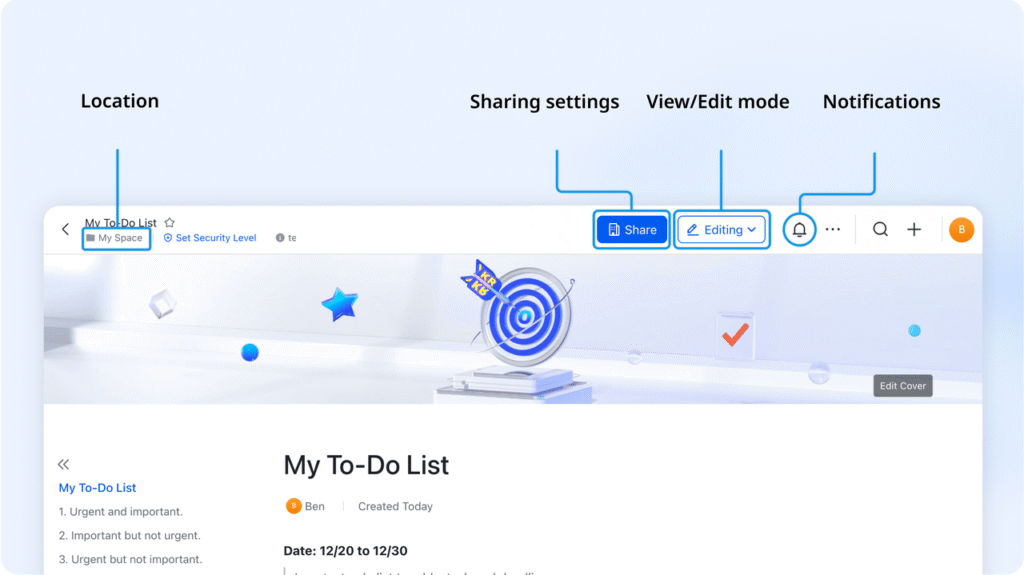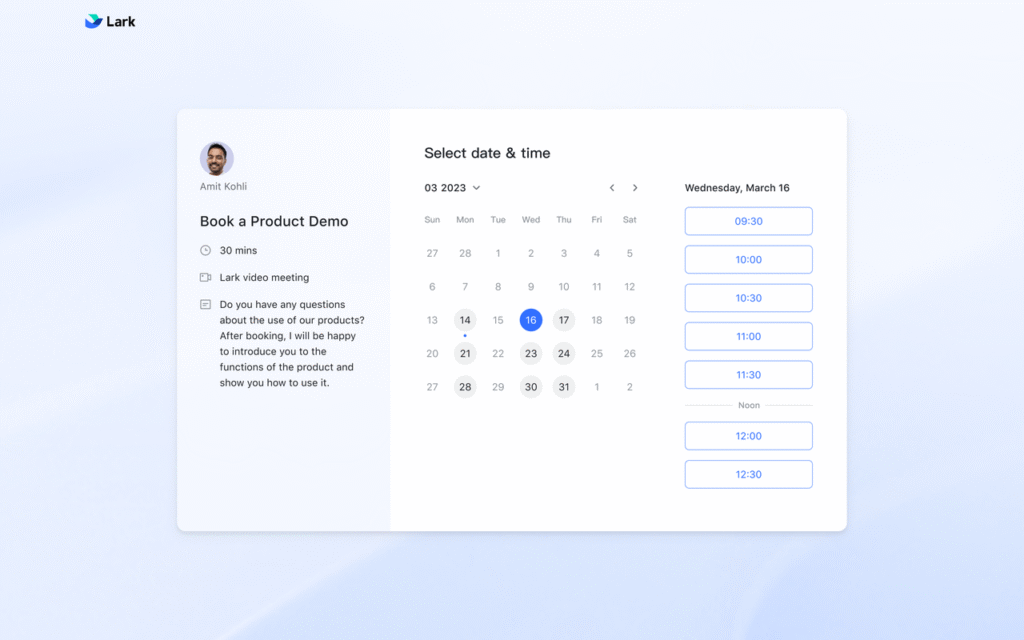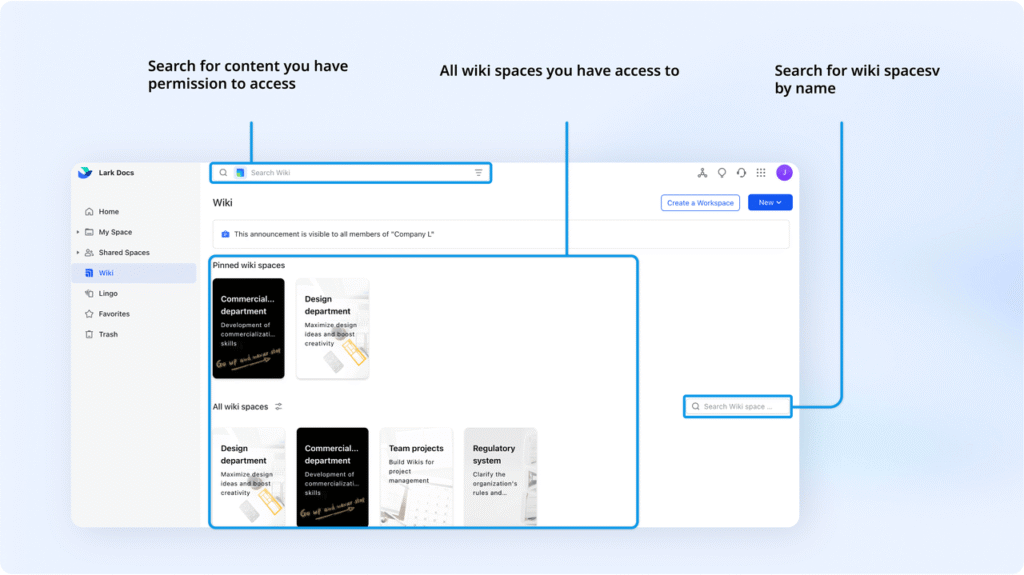
Creative agencies live in a constant sprint. One day it’s a last-minute campaign pitch, the next it’s chasing client approvals on storyboards, and somewhere in between, you’re juggling production schedules, scripts, and endless chats across scattered platforms.
Now here’s the thing: the faster an agency can organize all those moving parts, the more time it has to focus on the actual creative work. That’s where Lark comes in — not just as another communication app, but as a complete workspace built to keep projects flowing. It combines project boards, documents, approvals, and scheduling into one ecosystem, so teams spend less time chasing updates and more time delivering ideas.
For agencies evaluating the best project management tools, Lark has quickly become a favorite because it adapts to the unique demands of creative workflows without imposing rigid structures.
A project board built for creative campaigns with Lark Base
Every campaign starts with an idea, but agencies know it rarely stays simple. Suddenly, there are multiple stakeholders, client revisions, design assets, scripts, and video drafts — all needing a central home.
That’s what Lark Base offers: a customizable database that doubles as a project board. Teams can manage campaigns in Kanban, Gantt, or List views depending on preference, while still maintaining the flexibility of custom fields. Picture a creative agency setting up Base to manage a new product launch campaign. Each row could represent an asset — a social video, a billboard design, a PR pitch. Columns track deadlines, responsible teams, client feedback, and production status.
Instead of juggling spreadsheets and email chains, the agency team sees progress at a glance. Designers update their status directly in Base, copywriters upload drafts, and managers can filter views to see only what’s relevant for them. And with the ability to @mention collaborators directly inside Base fields, updates are instant and always in context.
Because Base updates in real time, everyone — from creative directors to interns — works off the exact source of truth.

Lark Base
Automating client approvals without delays with Lark Approval
Let’s face it: chasing approvals often kills momentum. A storyboard sits in someone’s inbox. A creative brief gets lost between client emails. Suddenly, the entire project timeline is off track.
With Lark Approvals feature, agencies eliminate that bottleneck. Lark has replaced ineffective email correspondence with customizable approval chains with conditional logic. For example, if a campaign cost exceeds $50k, the request can automatically escalate to the CMO for approval. Every decision is logged, making it easy to see where everyone stands at all times and to create an audit trail for compliance or accountability.
This is precisely when the magic of Lark and its automation shine. Think about a social media agency. Many social media agencies manage multiple clients with weekly campaigns that require many approvals (copy, visual, ad spend). Lark allows agencies to do request workflows that have standard approvals instead of project managers chasing signatures. The result? Faster turnarounds and fewer missed deadlines.
That’s why agencies increasingly turn to automated workflow solutions like Lark, because they free creatives from administrative drags.

Lark Approval
From creative briefs to scripts in one place with Lark Docs
A campaign lives and dies by its briefs. However, all too often, those documents are dispersed among Word docs, Google Drive folders, or haphazard Slack messages.
Lark Docs enables creative teams to keep everything in one location — from the brief to the final script. While a file is static, Lark Docs allows for real-time collaboration. Copywriters, strategists, and designers may brainstorm ideas, compose scripts, and contribute observations all at once, regardless of location, without having to sift through an interminable number of file versions.
And this collaboration is not limited to text. Lark Docs can embed Figma files, videos, and interactive prototypes for a richer, more comprehensive form of feedback. A film production agency working on a television commercial could build out an entire script in Lark Docs, with directors providing comments for scene descriptions, clients suggesting changes to dialogue, and producers linking in reference links or embedded mockups.

Lark Docs
Keeping production schedules visible with Lark Calendar
Ask any producer; deadlines are the lifeblood of agency work. A missed deadline doesn’t simply mean a delay; it disrupts the entire campaign schedule for the client.
That’s where Lark Calendar serves its purpose. Instead of the email invites on Google or all those disparate calendar apps, agencies have the comfort of sharing production milestones with their entire production team.
Imagine you are a video production house and have multiple shoots happening at one time. The Calendar shows shoot days, editing timelines, client review slots, and final delivery deadlines in one shared view. Because it syncs directly with Lark Meetings, teams can jump from schedule to video call without toggling between platforms.
It’s worth noting, though, that recurring tasks and dependencies require a Base connection. While Calendar handles scheduling beautifully, project-level task management works best when paired with Base boards.
The beauty is transparency. When everyone sees the full production map — writers, editors, clients — it’s easier to coordinate and avoid missed handoffs.

Production scheduling
Building a knowledge hub with Lark Wiki
Every agency has a treasure trove of resources — brand guidelines and tone-of-voice guides, campaign playbooks, design templates, and more. The problem is these documents often live as email attachments, stored in Google Drive or someone’s desktop folder.
Lark Wiki addresses this problem by creating a living knowledge centre for agencies. Teams can consolidate everything from client onboarding documents to visual identity guides into a single searchable location. The onboarding process is streamlined. Work and use the latest materials — new hires don’t have to ask “where’s that file?” because they can find it instantly.
The collaborative component of Lark Wiki is another level of benefit. Strategists can write guides together, designers can upload visual references, and project managers can attach checklists and workflows — all in real time. Instead of relying on outdated PDFs, agencies now work with living documents that change with every new campaign.

Lark Wiki
Final thoughts
For creative agencies, speed and clarity are everything. The difference between delivering a campaign on time or losing momentum often comes down to how well a team manages its workflow.
As business process management software, Lark provides a single place to keep campaigns moving — from kickoff briefs to final approvals. It’s not about adding complexity; it’s about reducing friction so ideas can move faster from brainstorm to execution.
So, if your agency is tired of scattered tools and endless approval loops, it’s time to look at Lark as more than just a messaging app. It’s the modern workspace built to match the way creative agencies work.
Read More on Leeds Journal